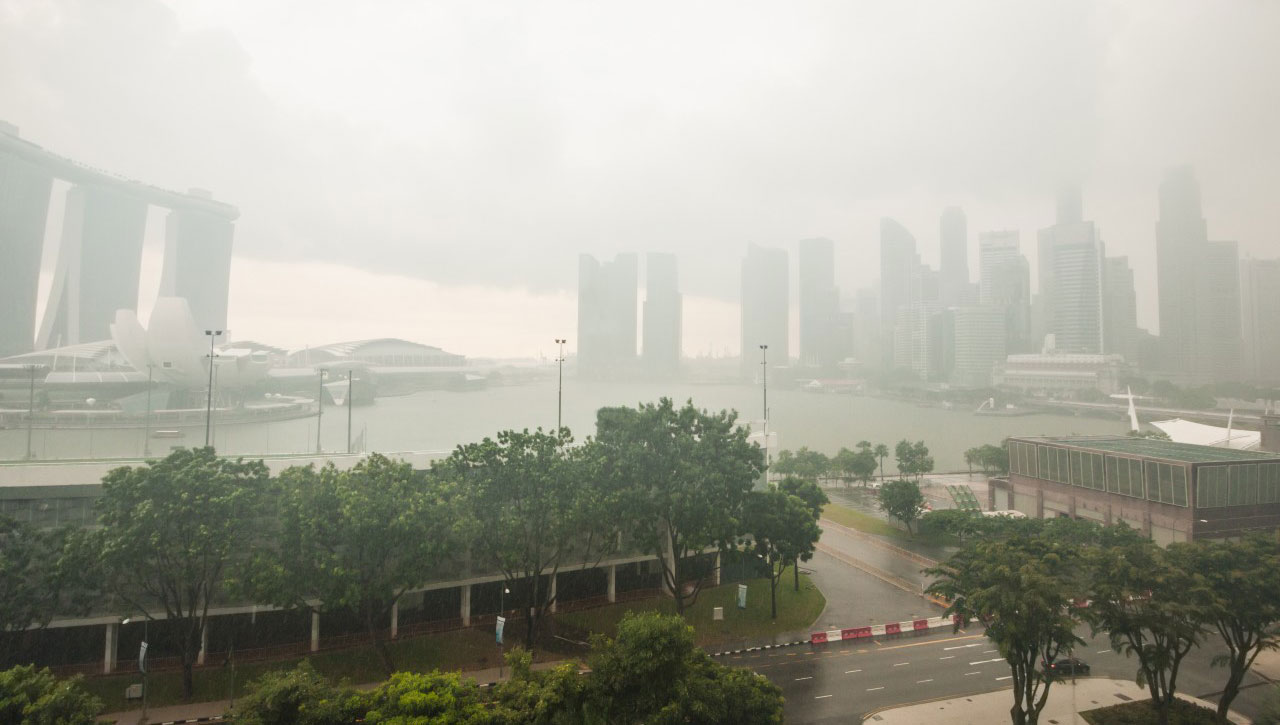The Hydroinformatics Institute (H2i) and the National University of Singapore have been jointly awarded a tender by National Water Agency PUB to jointly develop a Coastal-Inland Flood Model to address the potential threats posed by climate change.
The two will combine their strengths to develop a model capable of evaluating both inland and coastal flood risks. Against a backdrop of rising sea levels and flooding caused by intense rain, the model will aid PUB in planning adaptation measures that will allow it to secure Singapore’s coast and densely built-up and urbanised environment.In the shorter term, the model will also support site-specific studies for various parts of the island.
The overall project team will be led by Professor Philip Liu, a Distinguished Professor from NUS’ Department of Civil and Environmental Engineering. H2i will lead on the development of the inland portion, while NUS focusses on the development of the coastal model. PUB officers will work closely with the project team during the entire project duration to share their experiences on existing modelling systems.
H2i, with its rich expertise in hydrological and inland flow modelling and model development, will build on work it has done on Virtual Water for Virtual Singapore, a 3D rendition of how water behaves in parts of the island, as well as collaborations with PUB on rainfall monitoring and predictions using X-band radar technology.
H2i’s Senior Data Scientist Abhishek Saha, who will lead H2i’s efforts on this project, explains: “With rising sea levels and more intense rainfall, we know there is a risk of flooding. What we cannot pinpoint is where, when and how that flooding will play out. The model will meaningfully balance the need for both speed and accuracy in simulating future climate and water-behaviour scenarios, especially given Singapore’s urban terrain and infrastructure, and how it uniquely affects how water flows.”
In a city like Singapore, there is also an especially small “margin for error”, he adds.
“Singapore has a complicated landscape. A flash flood that lasts for 40 minutes in a less dense environment has very different implications in a highly urbanised city with power cables, subway systems and a heavily utilised below-ground space. This is what makes it challenging,” he adds.
H2i’s model, which covers the inland portion of the overall model, uses a proprietary technique invented by world-renowned hydraulics specialist Professor Guus Stelling, who is also on its team for this project. Prof. Stelling’s parallel subgrid system takes into consideration how terrain impacts the flow of water – which is what causes flooding to begin with – and decides on the most critical points to feed into the model.
“Today, we are able to access a lot of very detailed data on everything from terrain to drainage. But there is a question of how to optimally use all that detail in combination with things like weather predictions for meaningful insights, and to make predictions as precise as they need to be,” explains Prof Stelling.
As the model will need to be continually updated and improved with new climate data and developments in climate science, PUB’s officers will work closely with the H2i and NUS teams, allowing PUB to build new expertise in-house to develop, test and validate coastal protection technologies and concepts. When completed, PUB will be equipped to operate the model and make future enhancements to it when needed.
Ms Hazel Khoo, Director of PUB’s Coastal Protection Department, says, “As a small coastal city with many low-lying areas, Singapore is particularly susceptible to rising sea levels. Coupled with the upward trend of average annual rainfall and the frequency of heavy rainfall that we have observed in recent decades, the development of this model is timely as we embark on the monumental task of building coastal defences for Singapore. Through this project, we aim to enhance capabilities and deepen our expertise in modelling to support coastal protection efforts from now and into the future. Given the uncertainties in climate science, protecting our coastlines will always be a work-in-progress, but we aim to stay ahead of the curve. We are pleased to have both NUS and H2i on board, and look forward to working with them on this important project.”
